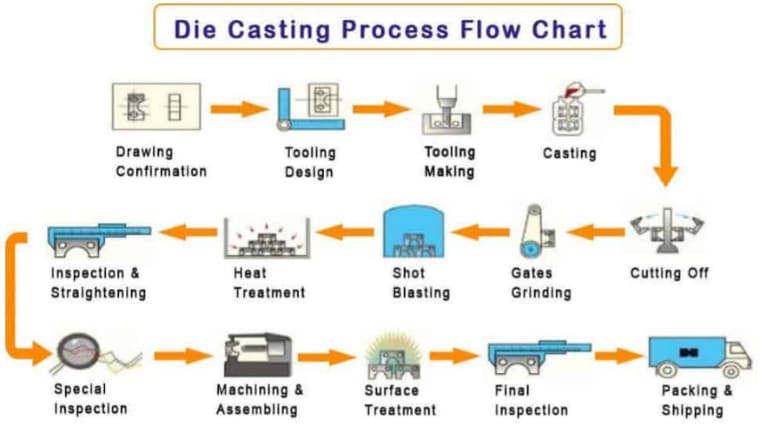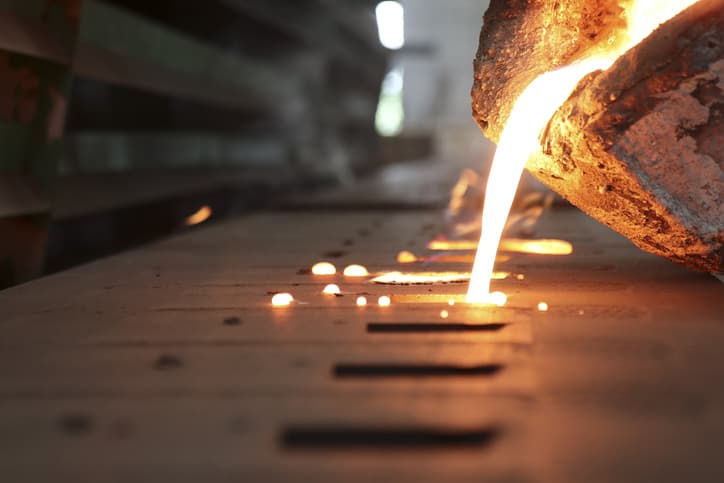Unpacking The Art Of **Casting Jersey Shore**: More Than Just A Search For Personalities
When you think about the wildly popular reality television show, Jersey Shore, what first comes to mind? For many, it's the unforgettable personalities, the dramatic moments, and the sheer, unadulterated fun that unfolded on screen. But how exactly did these distinct individuals, who became household names, come together? It’s a process far more intricate than simply picking people off the street, and it involves a kind of discernment that, in some ways, is a bit like what happens when you’re dealing with different types of information in a system.
The search for the right mix of characters for a show like this, you know, it’s not just about finding someone who looks good on camera. It’s about finding a blend of energies, a set of reactions, and a sort of chemistry that will ignite. This kind of "casting," as we call it in television, is very different from, say, the kind of "casting" you might find in computer programming. In that context, there's no casting in the sense of finding actors; rather, you're dealing with things like type assertions and type conversions, where you're essentially telling a system how to interpret a piece of data.
So, while we're talking about the human element of finding the perfect fit for a reality show, it’s almost like the producers are doing their own form of "type assertion." They are looking at individuals and, in a way, assuming what "type" of character they might embody for the show. This isn't just about assigning a role; it’s about recognizing an inherent quality and then, perhaps, converting that raw personality into something that truly shines on television. It's quite a fascinating process, if you think about it.
Table of Contents
- The Quest for the Perfect Mix: Understanding Casting Jersey Shore
- The Initial Search and the Idea of Type Assertion
- From Raw Talent to On-Screen Persona: The Conversion Process
- The Challenge of Fit: When Personalities Are "Out of Range"
- The Art of Dynamic Selection and Potential Risks
- The Legacy of Jersey Shore and Its Enduring Appeal
- Frequently Asked Questions About Jersey Shore Casting
- Conclusion
The Quest for the Perfect Mix: Understanding Casting Jersey Shore
Finding the right people for a reality show like Jersey Shore is a bit like putting together a complex puzzle. It's not just about getting individuals; it's about making sure their personalities, their quirks, and their life experiences mesh in a way that creates compelling television. The goal is to find a group that, when put under one roof, will naturally generate interesting interactions and, yes, some drama. This search for that just-right combination is what makes the whole endeavor so captivating for viewers, and for the people behind the scenes, it's a very precise operation.
The producers, you know, they aren't just looking for a specific "type" in a narrow sense. They are, in a way, trying to ensure that the "values" of each personality fall within a certain "range" that can be represented on the show. If someone's personality is too quiet or too extreme, it might be "out of the range" that can be effectively shown. If it's in range, they can simply assign that person a spot, and they're done with that particular piece of the puzzle. It’s about finding people who fit the overall vision without being carbon copies of each other, which, as a matter of fact, is quite a balancing act.
This whole process of selecting people for a reality program has certainly evolved over time. Years ago, the approach might have been a little less refined. Now, with so many shows out there, the techniques for finding and nurturing talent for the screen have become, well, quite sophisticated. It's a continuous learning curve for casting directors, always adapting to what audiences want to see and how different personalities interact under the glare of the cameras.
The Initial Search and the Idea of Type Assertion
When the casting team for Jersey Shore first set out, they weren't just looking for a bunch of people who enjoyed the shore life. They were looking for distinct personalities that could be "asserted" into specific roles within the house dynamic. This is where the idea of "type assertion" comes into play, not in a technical programming sense, but as a way to think about how producers identify and categorize potential cast members. They're making an educated guess, a sort of confident declaration, about what kind of energy each person will bring.
Think about it: they might have been looking for the "party animal," the "sweetheart," the "loudmouth," or the "peacemaker." Each of these is a kind of "type" that they are asserting onto a person based on auditions and interviews. It’s like when you're working with data and you need to be sure it's the right "type" for what you want to do with it. If you're dealing with a "type assertion" and are assuming a certain quality, you hope that assumption holds true once the cameras start rolling. This initial phase is quite crucial for setting the stage for the entire series, you know.
The initial search involves a lot of interviews, a bit of background checking, and often, group auditions to see how people interact naturally. It’s a delicate dance of observation and intuition. They are trying to find individuals who are genuinely themselves, yet also possess that certain spark that makes for compelling television. This process, in a way, tries to find those "objects" – the individuals – that aren't just generic, but have distinct qualities that can be highlighted.
From Raw Talent to On-Screen Persona: The Conversion Process
Once potential cast members are identified, the journey from raw talent to an on-screen persona begins. This is where the concept of "type conversion" becomes a useful metaphor. It's not about changing who someone fundamentally is, but rather about shaping how their personality is presented and how it interacts within the show's format. Producers might encourage certain aspects of a person's character to come forward, effectively "converting" their everyday self into a more defined reality TV character.
For example, if you think about how data might be stored as a string in a database but needs to be "converted" to a date format to be useful for calculations, it's a bit like that. A person's raw personality is like the "string" – full of potential, but perhaps needing a little shaping to fit the "date" format of a reality show narrative. This "conversion" helps to avoid confusion for the audience and makes the story flow better. It's a subtle art, really, and it helps ensure the show's narrative is clear.
This process can involve "static casting" for pre-defined roles, where a person is chosen because they perfectly fit a known archetype. But there's also "dynamic casting," which is more about how producers adapt and "convert" a person's real personality in real-time, based on how they behave in the house. This dynamic approach allows for flexibility and often leads to more authentic, albeit sometimes unpredictable, moments. It's a bit like taking pointers and references and allowing them to shift and change as the situation unfolds.
The Challenge of Fit: When Personalities Are "Out of Range"
Not everyone who auditions for a show like Jersey Shore is going to be a perfect fit. Sometimes, a personality might simply be "out of the range" that can be effectively represented by the show's format or tone. If someone is, say, too reserved or too prone to withdrawing, they might not generate the kind of engaging content the show thrives on. This is where the casting process can get a bit tricky, because it's about finding that sweet spot.
It's a bit like trying to fit a large integer into a small variable; sometimes, it just won't work, and you might encounter what could be called an "unboxing fails" scenario, where the personality simply doesn't "unfold" in the way the producers hoped. This isn't necessarily a fault of the person, just a mismatch with the specific needs of the show. The casting team has to make tough calls, even when they like someone, if that person's "type" doesn't quite align with the overall cast dynamic they are trying to build.
There are also times when a person might seem to fit on paper, but their actual behavior on camera doesn't quite translate. This can be confusing, much like "casting is sometimes confusing in C# if you don't know the details" of how types interact. The nuances of human behavior under pressure are hard to predict, and sometimes, even with the best intentions, a chosen cast member might not deliver the expected interactions, which, honestly, is a part of the reality TV game.
The Art of Dynamic Selection and Potential Risks
The casting process for a show as iconic as Jersey Shore isn't just a one-time decision; it involves a continuous, dynamic selection. Even after the initial cast is chosen, producers are constantly observing how the personalities interact, how they evolve, and whether they continue to fit the show's narrative. This is where the idea of "dynamic_cast" becomes relevant, as producers are always assessing and, if necessary, adapting their approach to the cast members and their roles.
Sometimes, a production might even engage in what could be metaphorically called "unsafe casting" – taking a risk on a personality that might be unpredictable but could also yield incredibly compelling television. This happens once it has been "confirmed that the index is an integer," meaning, once they're pretty sure this person has that core quality they're looking for, even if the exact outcome is a bit of a gamble. These risks can sometimes pay off big, creating the most memorable moments on screen.
The enduring challenge for any reality show is to maintain a sense of authenticity while also crafting a compelling story. This requires a deep understanding of human behavior and a keen eye for how different "types" of people will react to various situations. The producers are, in essence, trying to manage a complex system of human "variables" and "objects," hoping their interactions create something truly special for the viewers. It's a very intricate dance, really, between planning and allowing for spontaneity.
The Legacy of Jersey Shore and Its Enduring Appeal
The fact that people are still talking about and watching Jersey Shore, even years after its initial run and through its revivals, speaks volumes about the success of its original casting. The show managed to find a group of individuals whose personalities, when put together, created a phenomenon. This enduring appeal, you know, is a testament to the careful selection and the genuine connections that formed within the cast.
The questions about the "proper way of casting pointer types" – or, in our context, the proper way to select and guide personalities for a show – are still being asked today, even "12 years, 4 months ago" after the show first aired, and continue to be "modified 9 months ago" with new seasons and spin-offs. This shows that the fundamental principles of finding the right people for compelling reality television remain a topic of great interest and continuous refinement. It’s a challenge that, in some respects, never truly goes away.
The show's ability to "pass the value" of genuine human interaction and entertainment, without necessarily producing an "exception" or a catastrophic failure in its casting, is quite remarkable. It shows that when the right "enums" of personalities – the different "roles" like "role = 2," "projectfunding = 3," or "totalemp" – are brought together, the result can be truly impactful and resonate with a wide audience. The ongoing popularity of Jersey Shore: Family Vacation, currently airing in 2024, certainly highlights this point, as a matter of fact.
Frequently Asked Questions About Jersey Shore Casting
Q: What kind of people did they look for when casting Jersey Shore?
A: The casting team was looking for a very specific blend of vibrant, outgoing personalities who weren't afraid to be themselves and engage in lively interactions. They sought individuals who embodied the "guido" and "guidette" culture of the Jersey Shore, often focusing on people with strong opinions, a love for partying, and a natural ability to create compelling moments on camera. It was about finding a diverse group that would spark off each other, creating a dynamic environment for the show.
Q: Was the casting process for Jersey Shore really as dramatic as the show itself?
A: While the casting process itself might not have had the same on-screen drama, it was certainly an intense and competitive endeavor. Thousands of people likely auditioned, and the casting directors had to make some very tough choices to narrow it down to the final few. They were looking for authentic reactions and strong personalities, which meant a lot of careful observation and, in a way, "type assertion" to predict how each person would fit into the overall group dynamic.
Q: How did they ensure the cast would actually get along (or not get along) for the show?
A: The casting team didn't necessarily aim for everyone to get along perfectly; in fact, a little friction can be good for reality television! They focused on selecting individuals with strong personalities and distinct viewpoints, knowing that these differences would naturally lead to interesting interactions, both positive and challenging. It was about creating a mix of "types" that would, in a way, "convert" into engaging storylines, whether through friendship, romance, or conflict. They aimed for a group that would create an active, lively household, which, you know, is key for this kind of program.
Conclusion
The casting of Jersey Shore was, and remains, a masterclass in selecting personalities for reality television. It was a process that went beyond superficial appearances, delving into the very "type" of individual needed to create a cultural phenomenon. From the initial "type assertion" of potential cast members to the ongoing "conversion" of their raw personalities into on-screen characters, every step was about crafting a compelling narrative. The show's enduring popularity, even today, shows just how well the producers managed to bring together a group whose interactions were truly unforgettable.
It’s a powerful reminder that whether you're dealing with data types in a system or human personalities for a television show, the ability to understand, select, and sometimes "convert" elements into their most effective form is a skill that makes all the difference. To learn more about reality television production on our site, and to link to this page explore the legacy of the Jersey Shore cast.

Die Casting Process

11 Different Types of Casting Process - rapiddirect

11 Different Types of Casting Process - rapiddirect